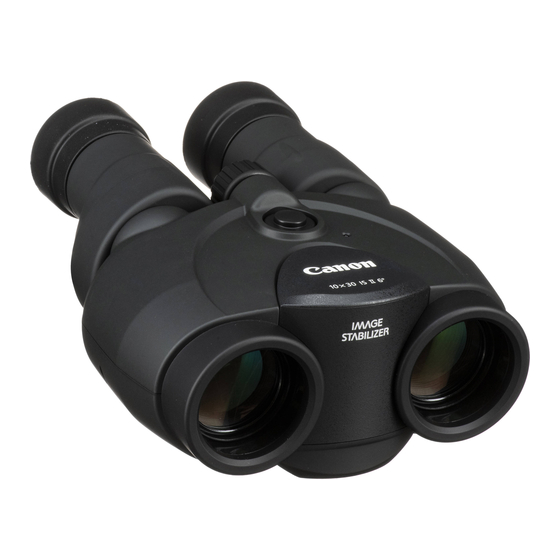Canon 10x30 IS II Manual - Página 4
Procurar online ou descarregar pdf Manual para Câmara digital Canon 10x30 IS II. Canon 10x30 IS II 25 páginas. Technology guide
Também para Canon 10x30 IS II: Brochura e especificações (8 páginas), Brochura e especificações (8 páginas), Manual do utilizador (2 páginas), Manual de instruções (13 páginas)

The first binoculars were invented about 400 years ago.
There are now several hundred different models of binoculars
manufactured and sold throughout the world.
Although the concept of seeing a magnified image with your
own eyes has not changed, there are two distinctly different
types of binoculars: prism binoculars and Galileo binoculars.
• Prism Binoculars
The majority of binoculars sold
today use convex lenses for both
the objective lens and eyepiece
lens. They are called prism
binoculars, because prisms are used
to "correct" the inverted image.
1) Porro Prisms (Fig. 1)
Because of the porro prisms,
the light passing through forms
a "Z" shape before reaching
the eye.
2) Roof Prisms (Fig. 2)
When using roof-shaped prisms,
called Roof (or Dach: meaning
roof in German) prisms, the light
passes through in a straight line,
which makes it possible to
design compact binoculars.
• Galileo Binoculars (Fig. 3)
The concept used in the telescopes
made by Galileo Galilei in the 17th
Century is used in these binoculars.
Because concave lenses are used
for the eyepiece lenses, prisms are
not needed to correct the images.
Also known as opera glasses, this
type is used for looking at objects
not too far away.
Objective lens
(Fig. 1)
Roof prisms
Objective lens
(Fig. 2)
Eyepiece lens
(Fig. 3)
Eyepiece
lens
Porro
prisms
Eyepiece
lens
Objective lens
